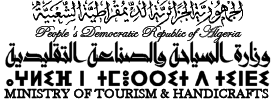KSAR TIOUT
It is located in the town of Tiout, south of the seat of the state, next to the national road No. 47, which connects Ain Al-Safra and the Wilayat of Al-Beidh, built with mud and stones over an area of 20 AH and a roof made of palm and juniper wood by the Al-Ahlav family who settled in Tiout in 1250 AD in the 14th century AD / 08 AH It is in the form of a residential complex made up of 123 dwellings separated by alleys leading to the old mosque, the guest house is a museum, 10 tombs, and it has two floors: a high house with a complete family dwelling and a low dedicated to cattle. The palace has 3 main entrances (Sidi Ahmed bin Youssef – Bab Hilal and Bab Khanaq)
The origin of the word TIOUT is originally Berber ZENAT, derived from the word Tit or Titwain, which means water sources (eyes) or water-rich area.
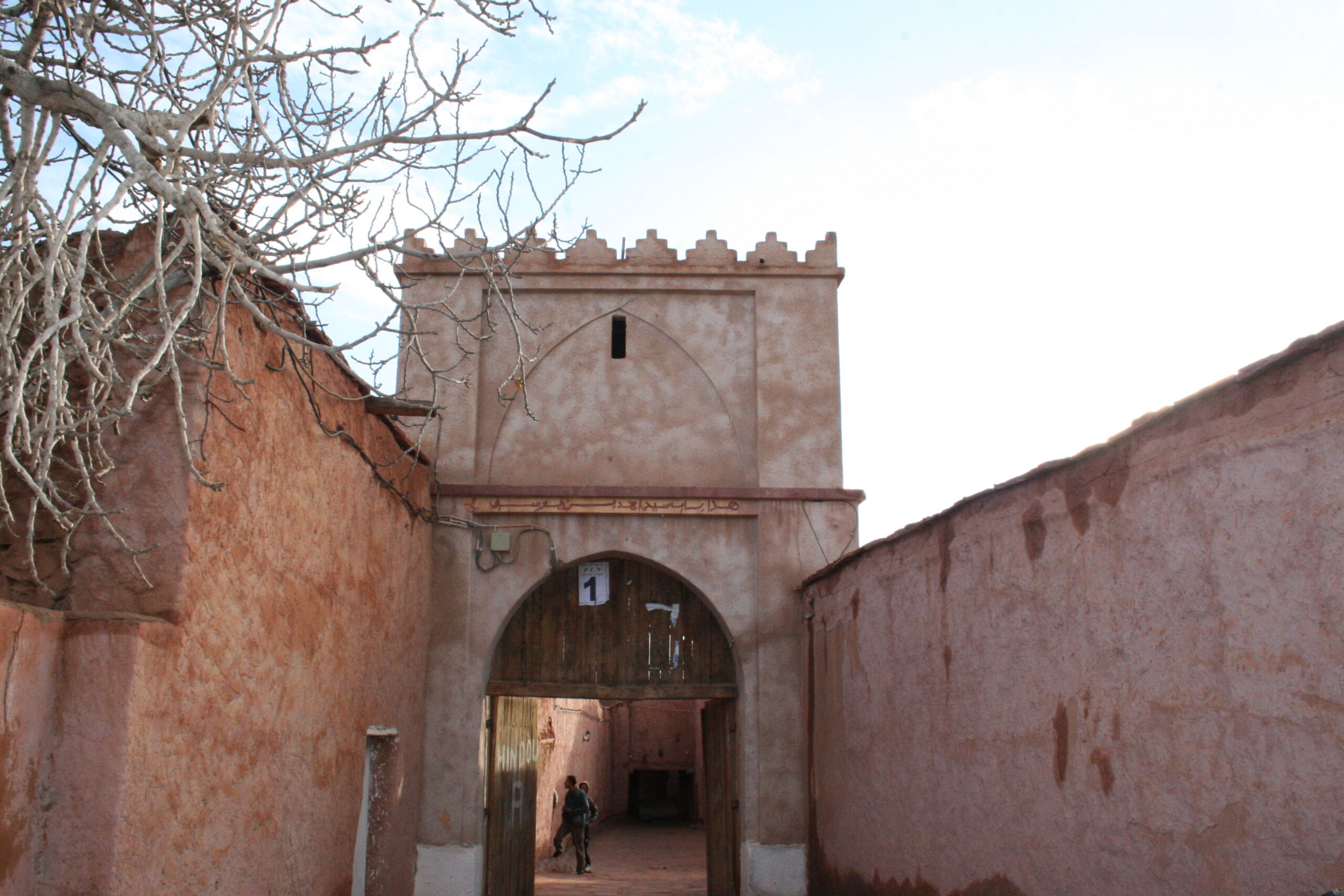
KSAR SFISSIFA
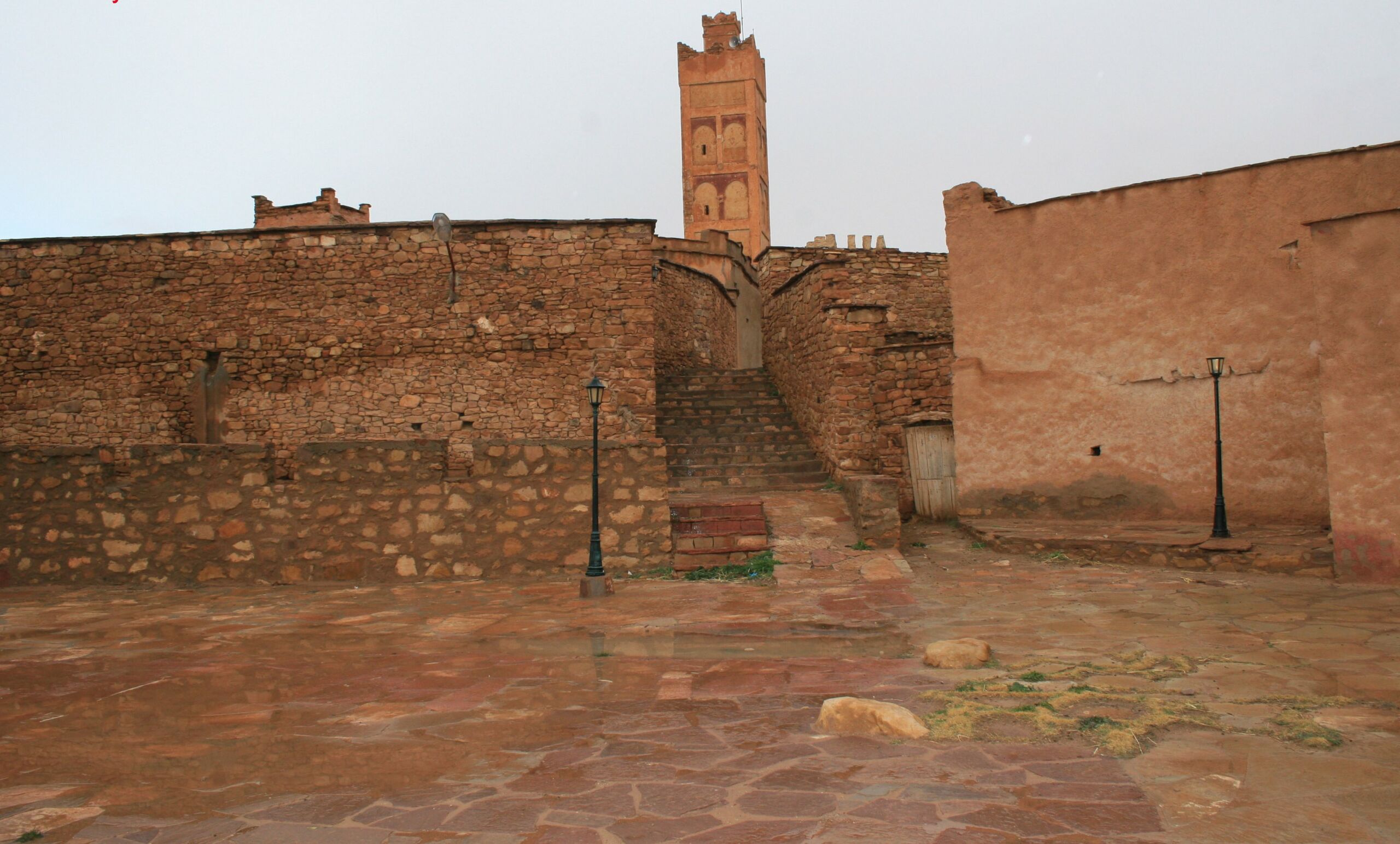
Ksar de SFISIFA is located in the southwest of the wilaya, built with stones and mud, covered with willow, juniper and palm columns 14th century after Jc -08 AH with an area of 37 hectares, triangular in shape with a defensive position and 11 gates; main 3 lead to the old mosque and from there to the tachraft square, they consist of 212 dwellings, 4 occupied, 32 deserted and 71 made up of ruins and the corner of SIDI AHMED BEN MOUSSA, 9 tombs and 5 tombs
KALAT CHEIKH BOUAMMAMA
Origin of the palace is ancient, it was re-enlarged by the resistance CHEIKH BOUAMAMA with an area of 21,707 m². It was built of mud and palm tree trunks on the mountainside according to a strategy. that he built are still standing. The official entrances and gates:
(BAB AIT ALI – BAB AL-SHORFA – BAB AL-DIRAH – BAB AGHRA THE TITLE AND THE EXIT AWLAD AL-FATIMI) consists of semi-disappeared residences (ruins) of the old mosque, zaouïa of CHEIKH BOUAMAMA, the house of hosts and the museum.
Etymology: The word MOGHRAR is composed of two words, UM and GHRAR. The UM: was deleted at the beginning of the word to reduce it, so it became GHRAR: which means low ground.

KSAR OF MOGHRAR EL FOUKANI
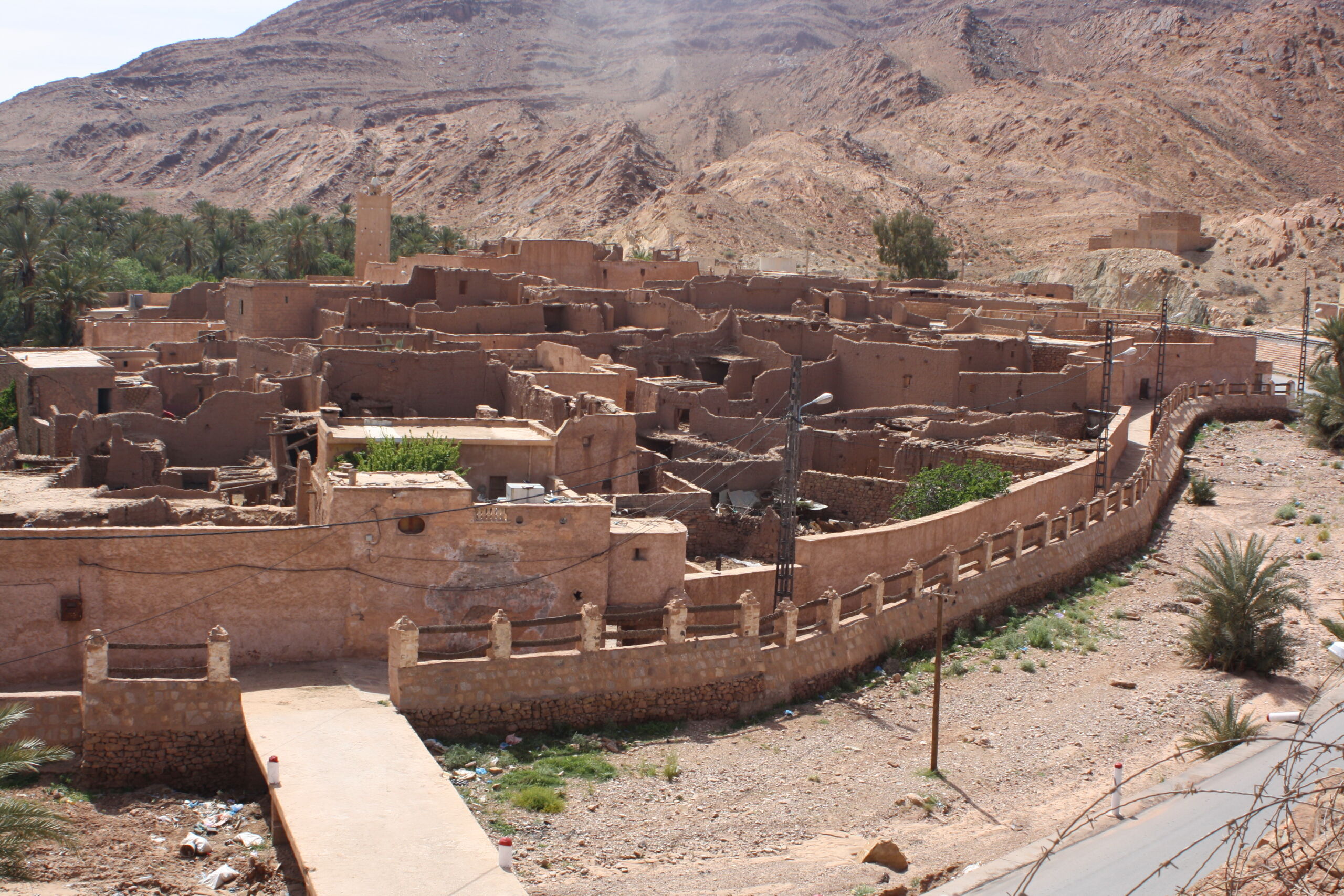
It is located south of the city of MOGHRAR, between the oasis and RN No. 06, built between the 16th century AD / 10 Hijri and the 17th century AD / 11 Hijri, with an area of approximately 02 Ha. The paths (AWLAD ZAYAN, AWLAD AL-SHEIKH, AWLAD ISSAWY, DARB AWLAD MAKKI) have a courtyard in the middle, consisting of 45 dwellings (10 occupied and 35 deserted) and the old mosque.
Origin of the name: MOGHRAR was an area of passage between the desert and the hill where the tribes met to consult and make decisions.
KSAR OF SAMER
It was built in the 15th century compatible 09 Hidjri with an area of 19255 m² by the tribe of AWLAD SIDI HAJ BOUDAOUD “AIT ATABI” on the hill on the side of TAWZA, a square with two floors, punctuated by narrow streets in the middle of a mosque, and it has main doors (BAB AWLAD HAMMAD – BAB AWLAD AZZOUZ – BAB AWLAD AJAJ – BAB AWLAD BOUDJEMAA) and what remains are ruins.
Origin of name: The word HONEY is derived from the word honey, where bees lived in large numbers in the rocky mountains of the region
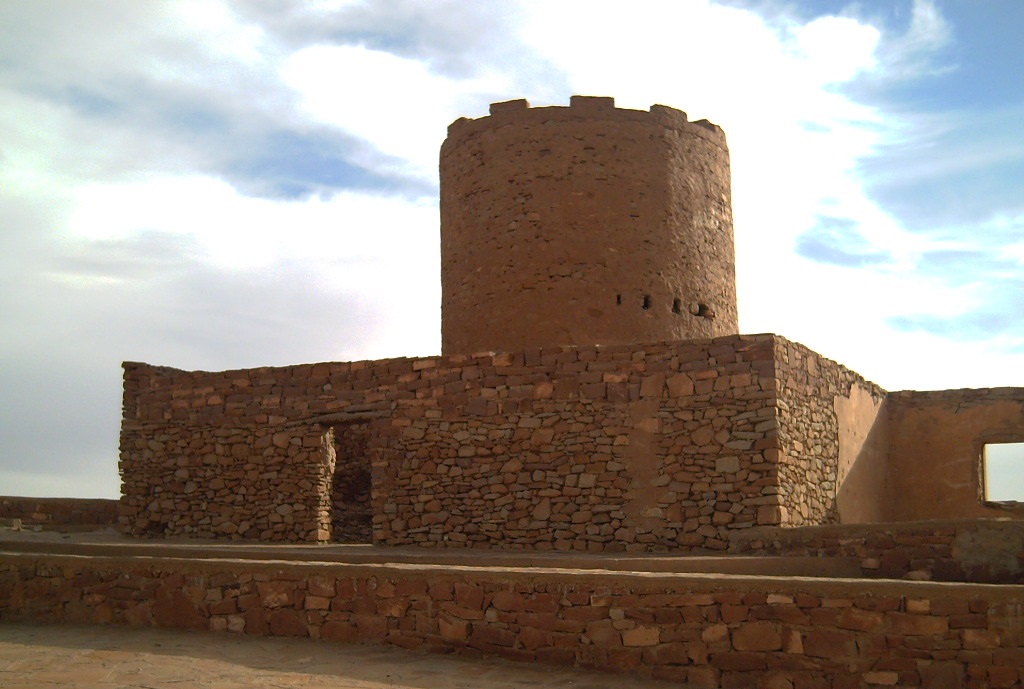
KSAR SIDI BOUDKHIL
A newly constructed palace located in the far southeast of the city of Ain al-Safra, bordered on the north by Al-Wad Al-Kabir, on the south by the foot of Jabal Makthar, on the east by the dunes of sand, to the west by Wadi El-Bureij. Bab al-Erak – Bab al-Sad and Bab al-Mawt Most of its buildings have disappeared and much of its features have disappeared due to the torrential rains of 1964 and the municipal decision in 1978 to demolish many dwellings, the remaining part of the palace, with an area of 5213 m2

